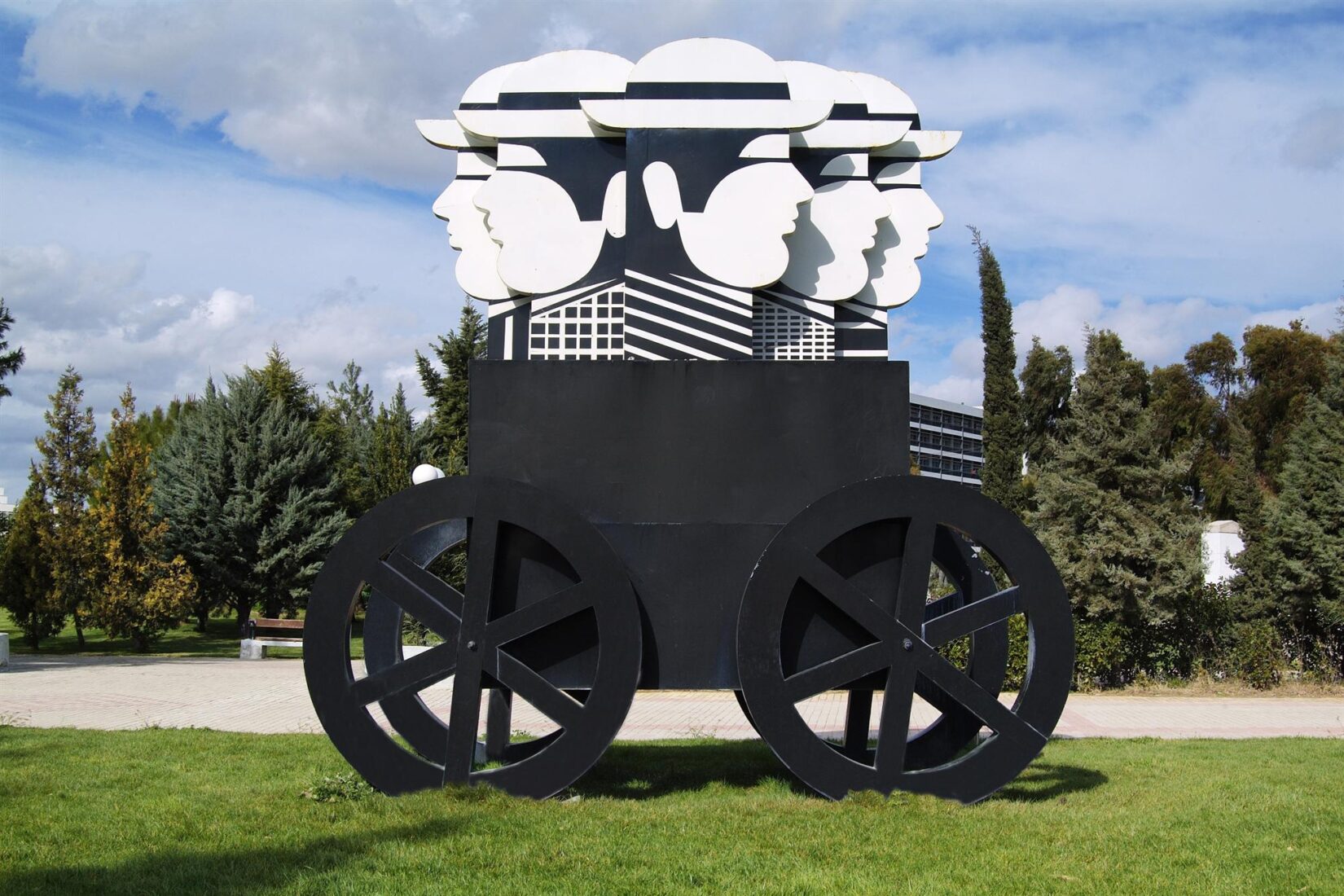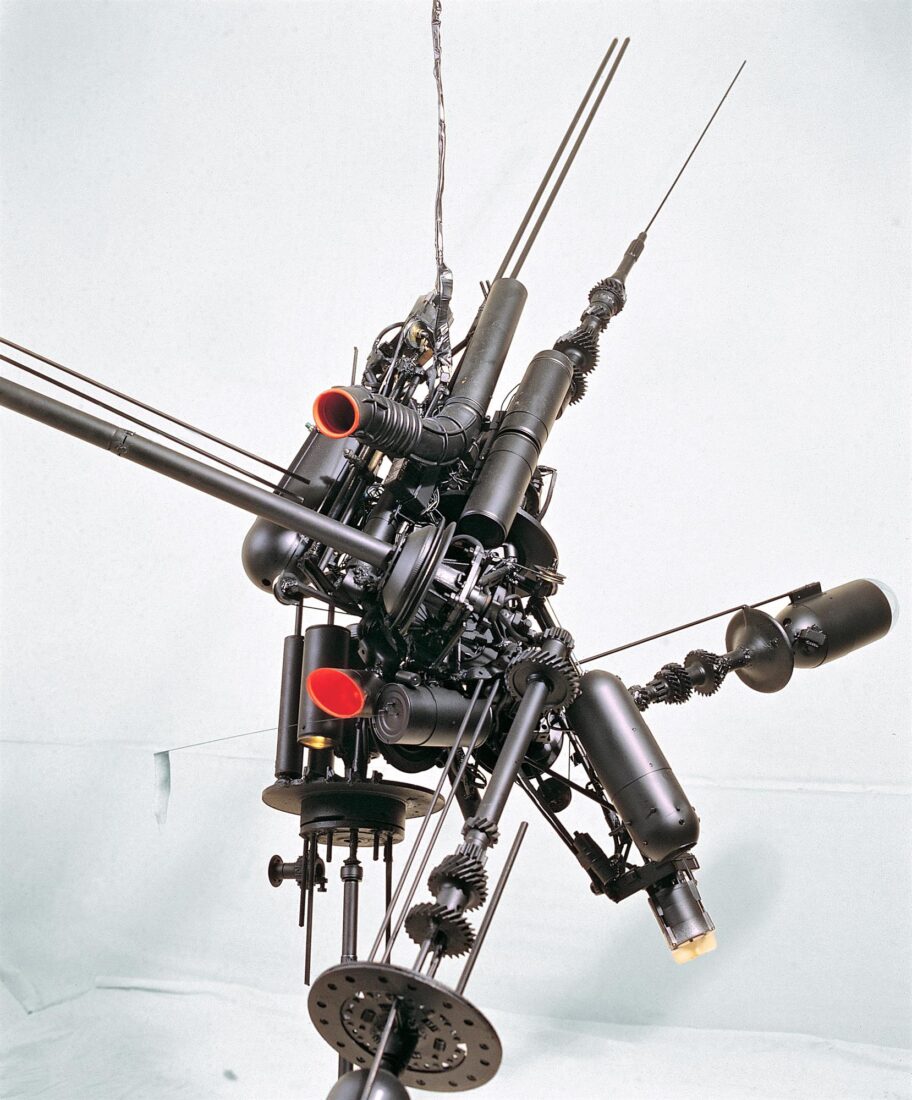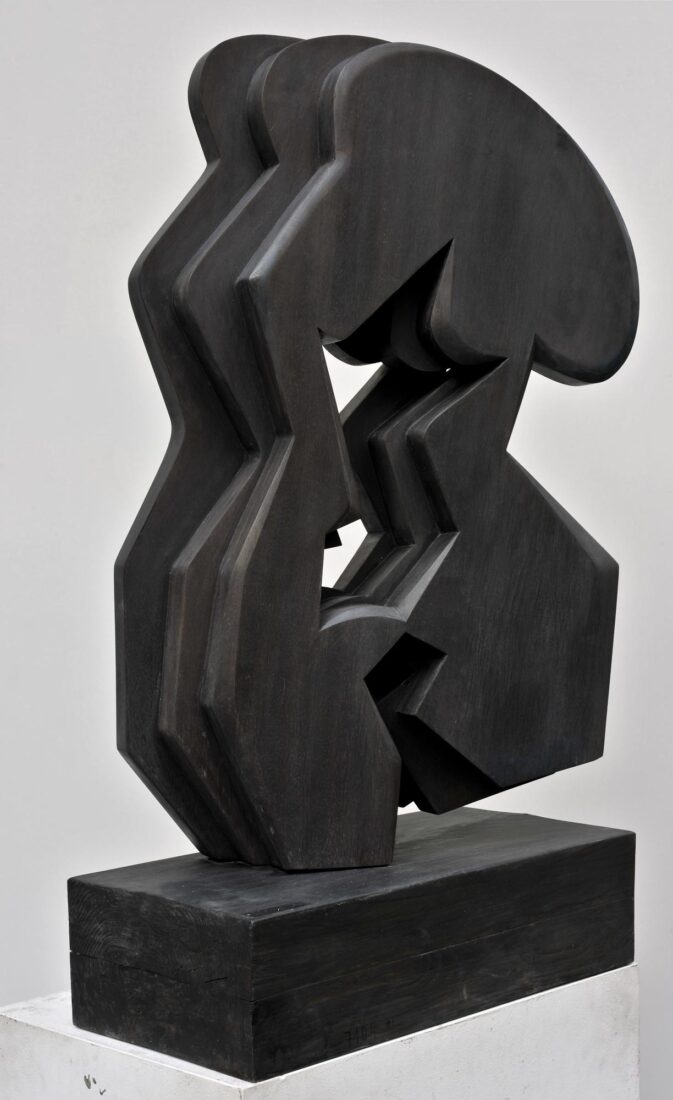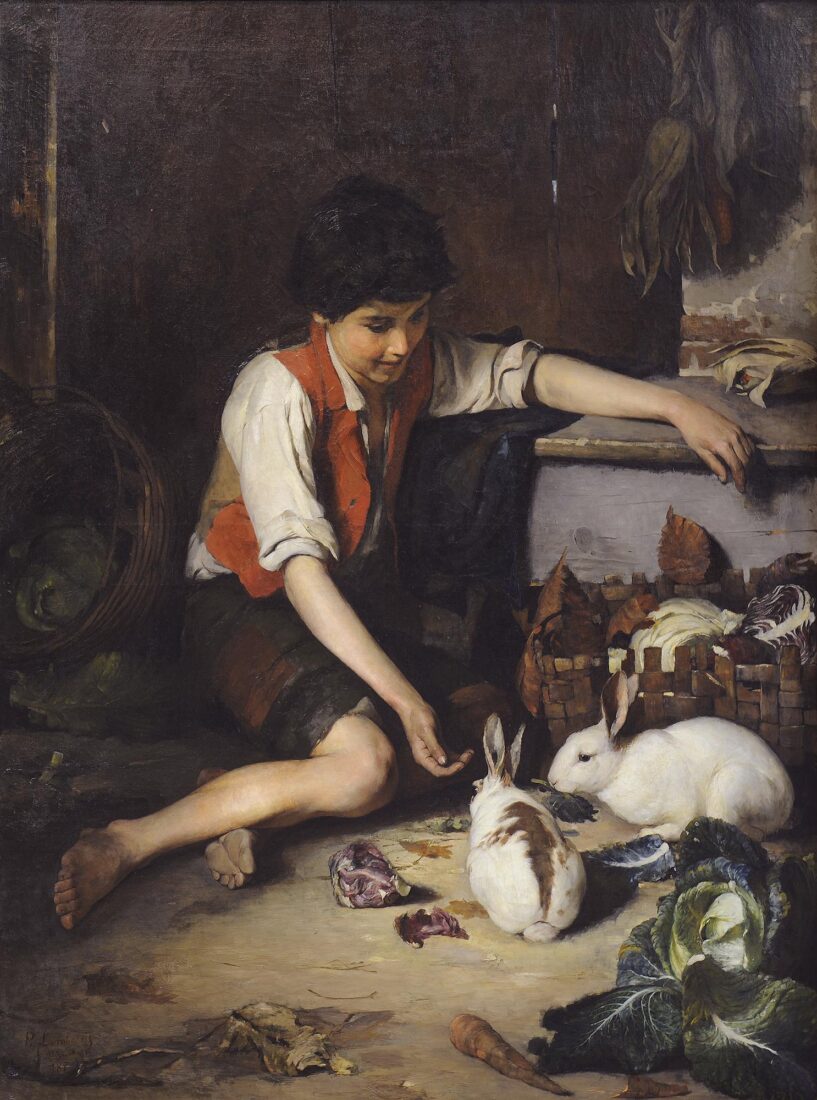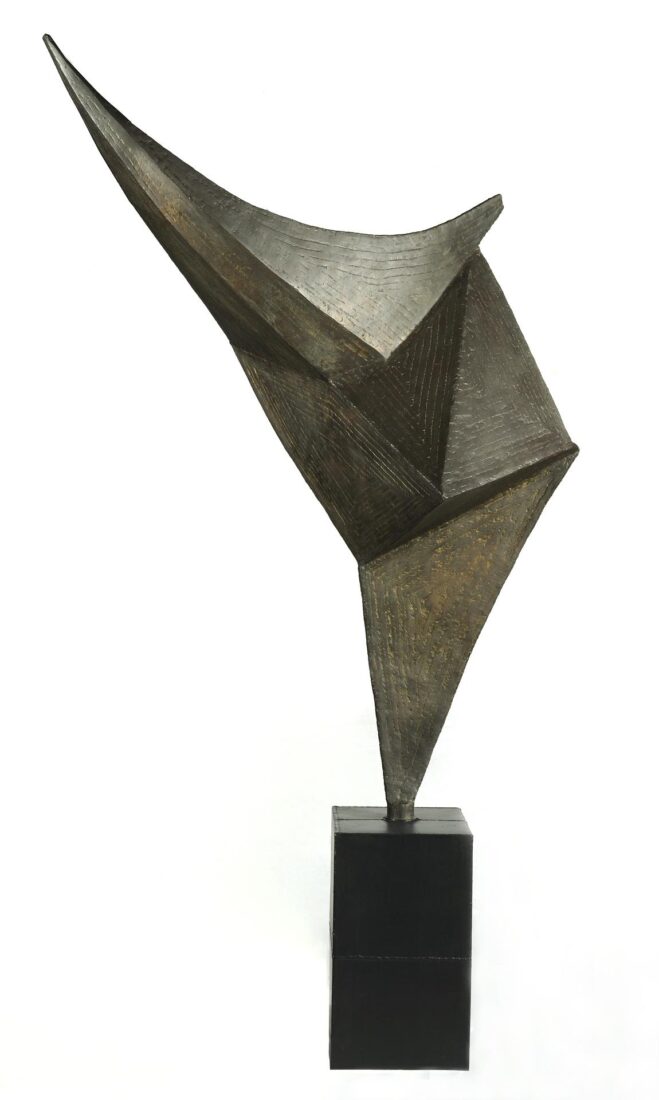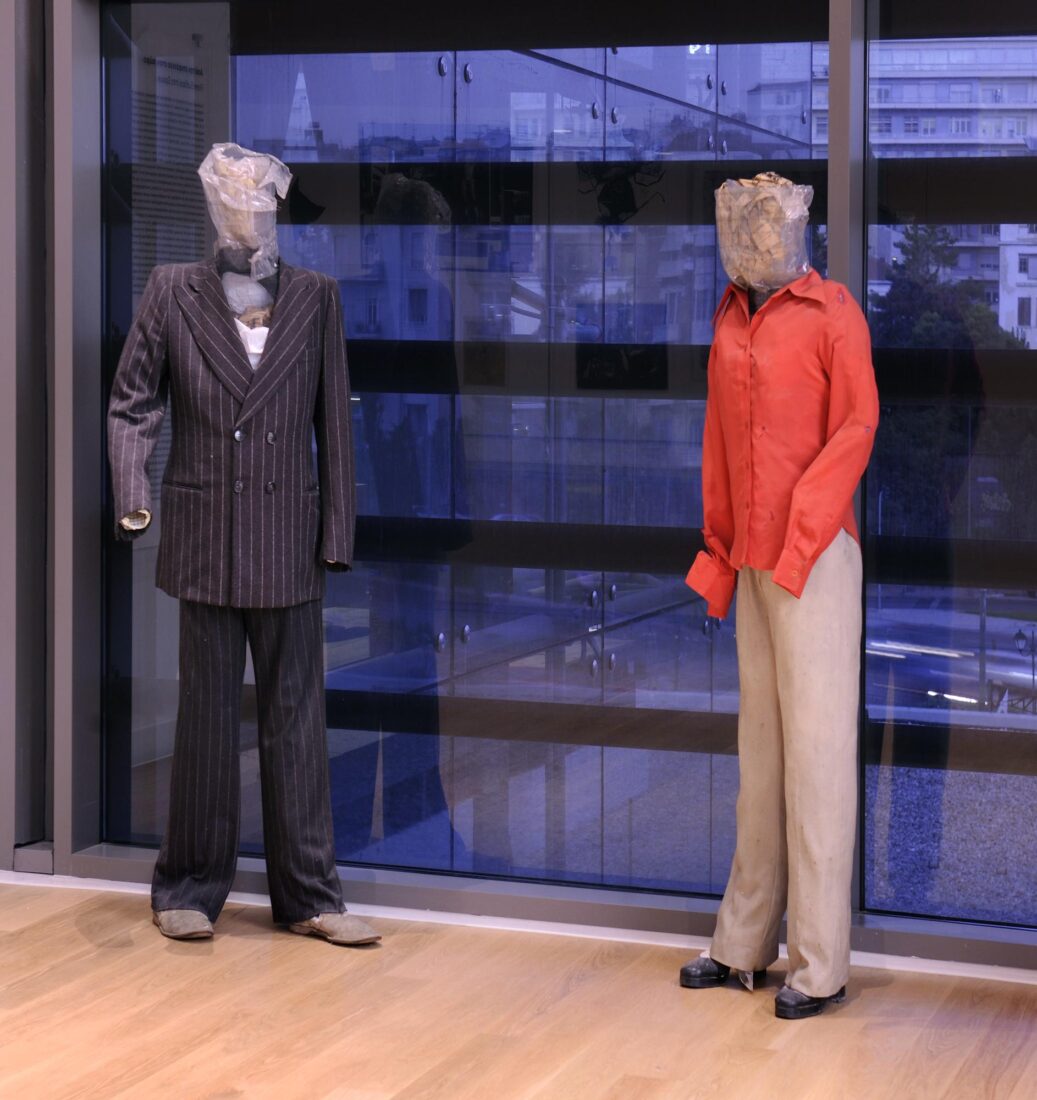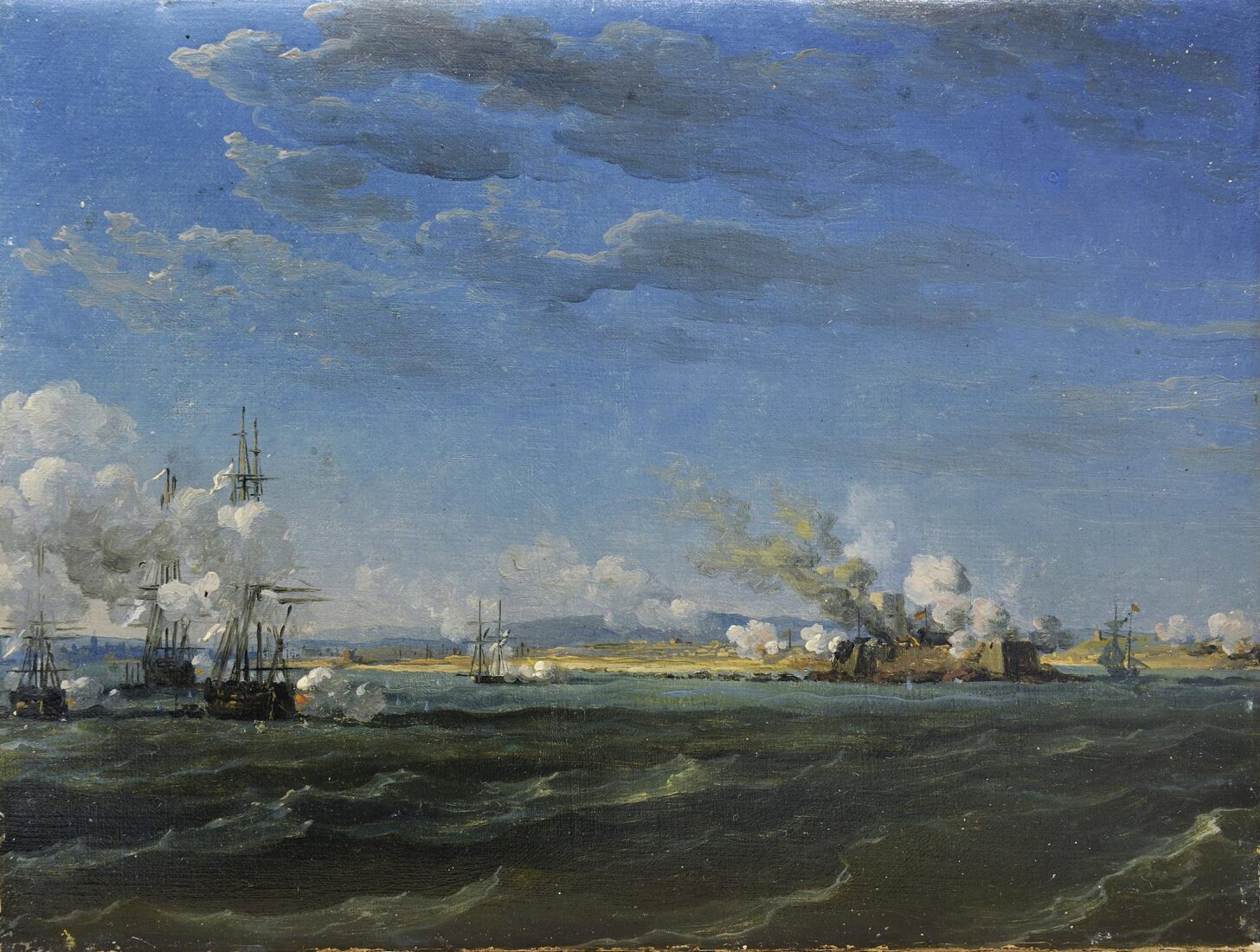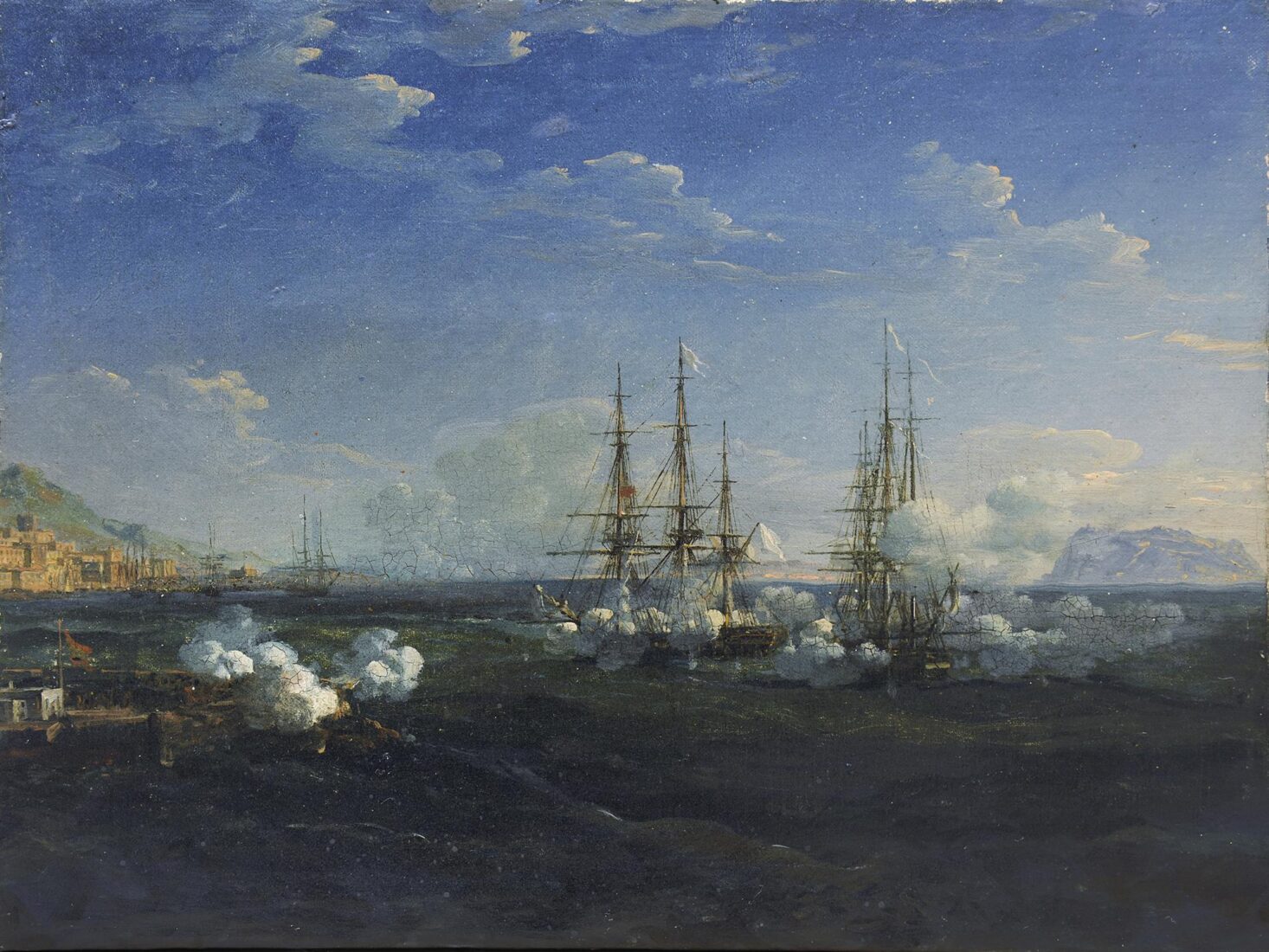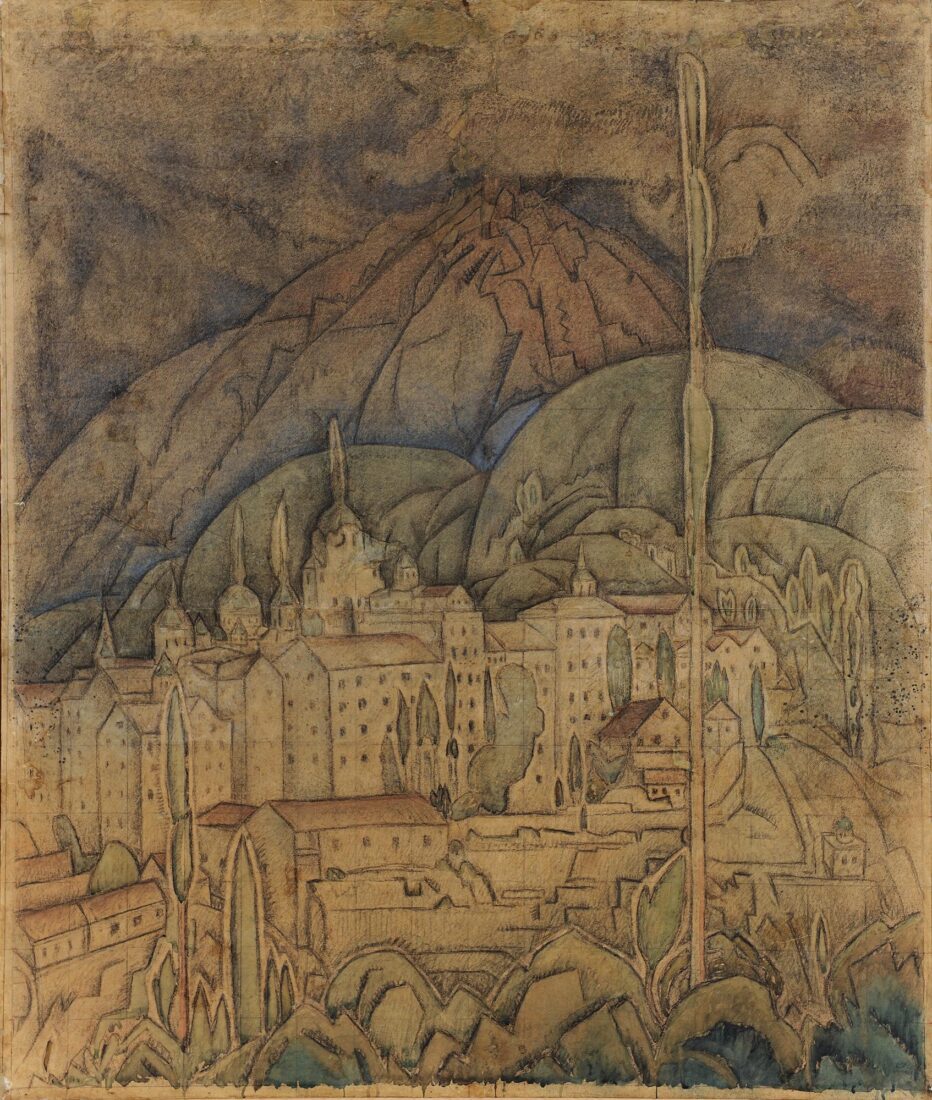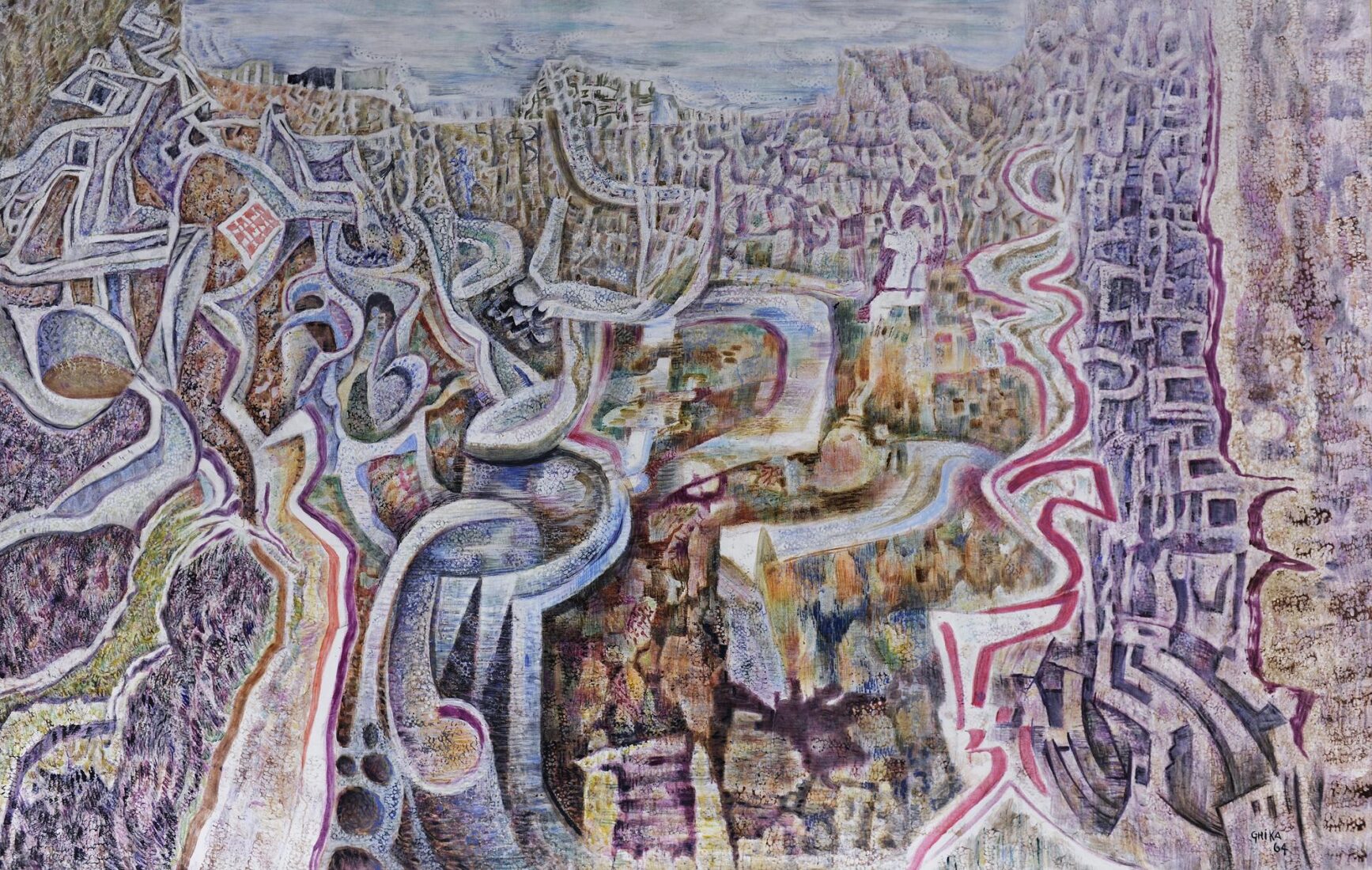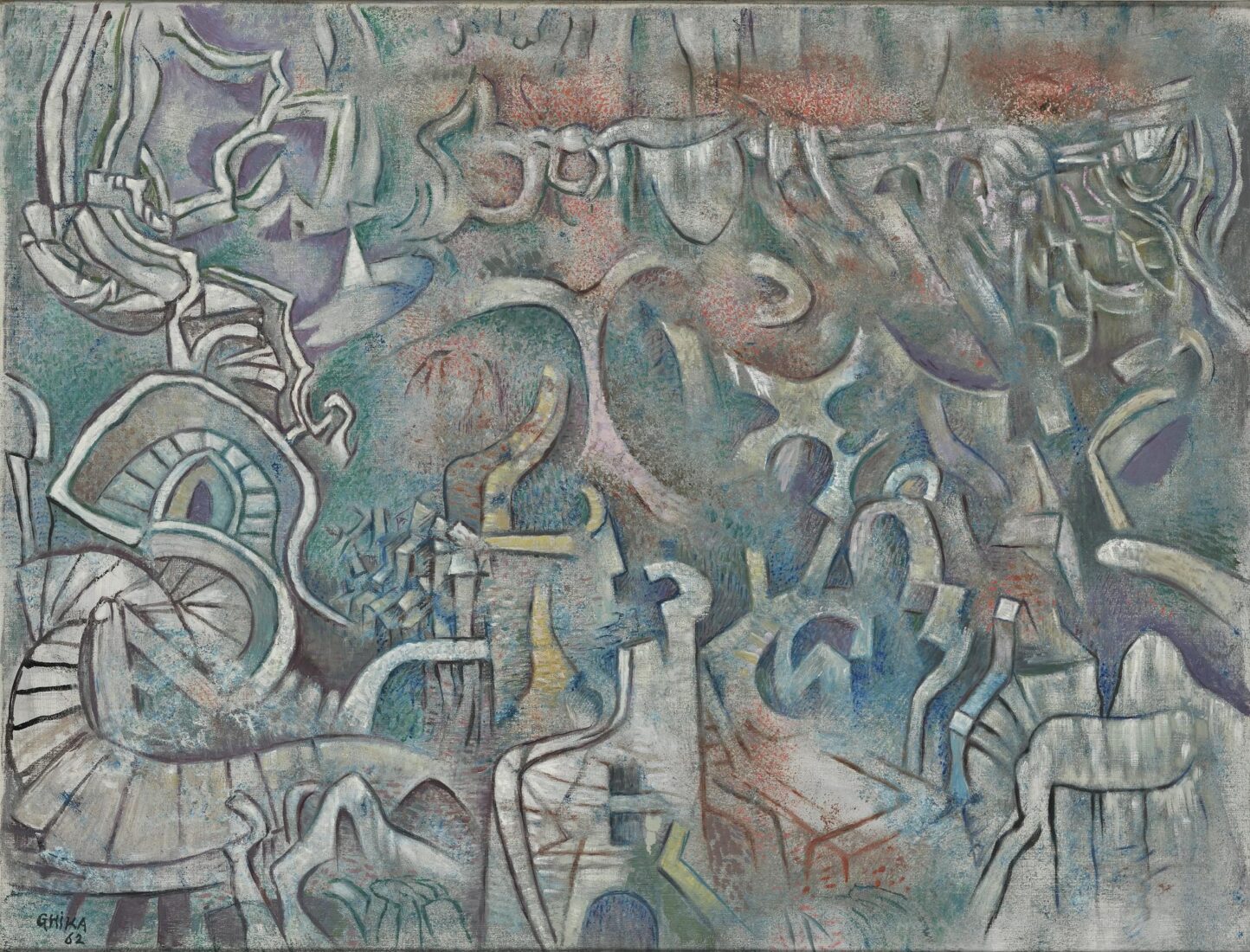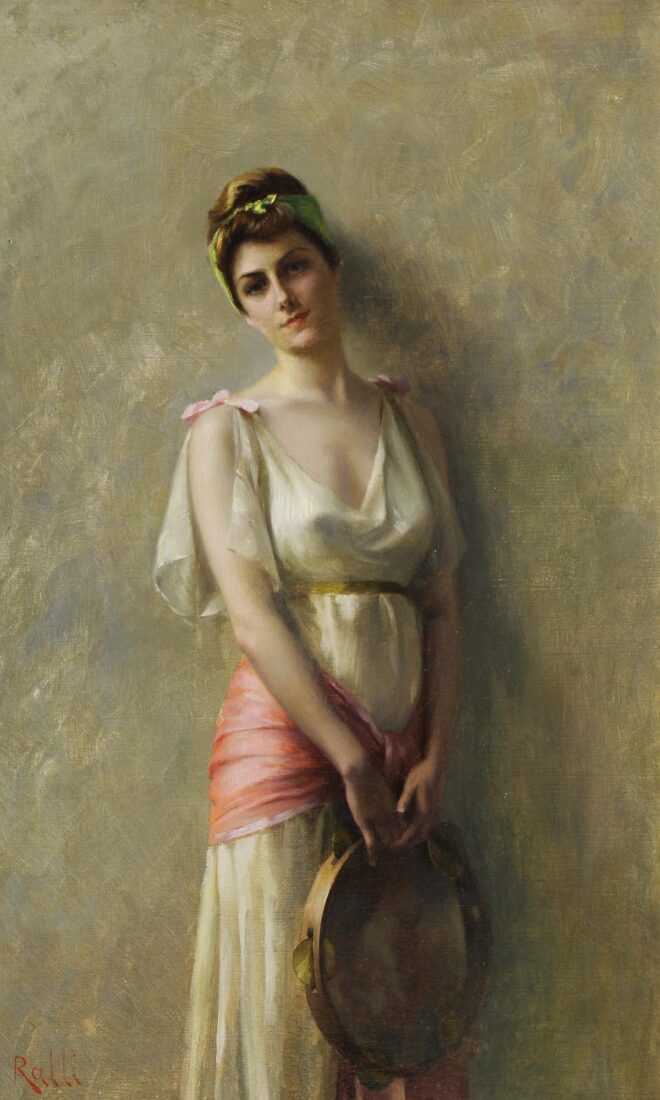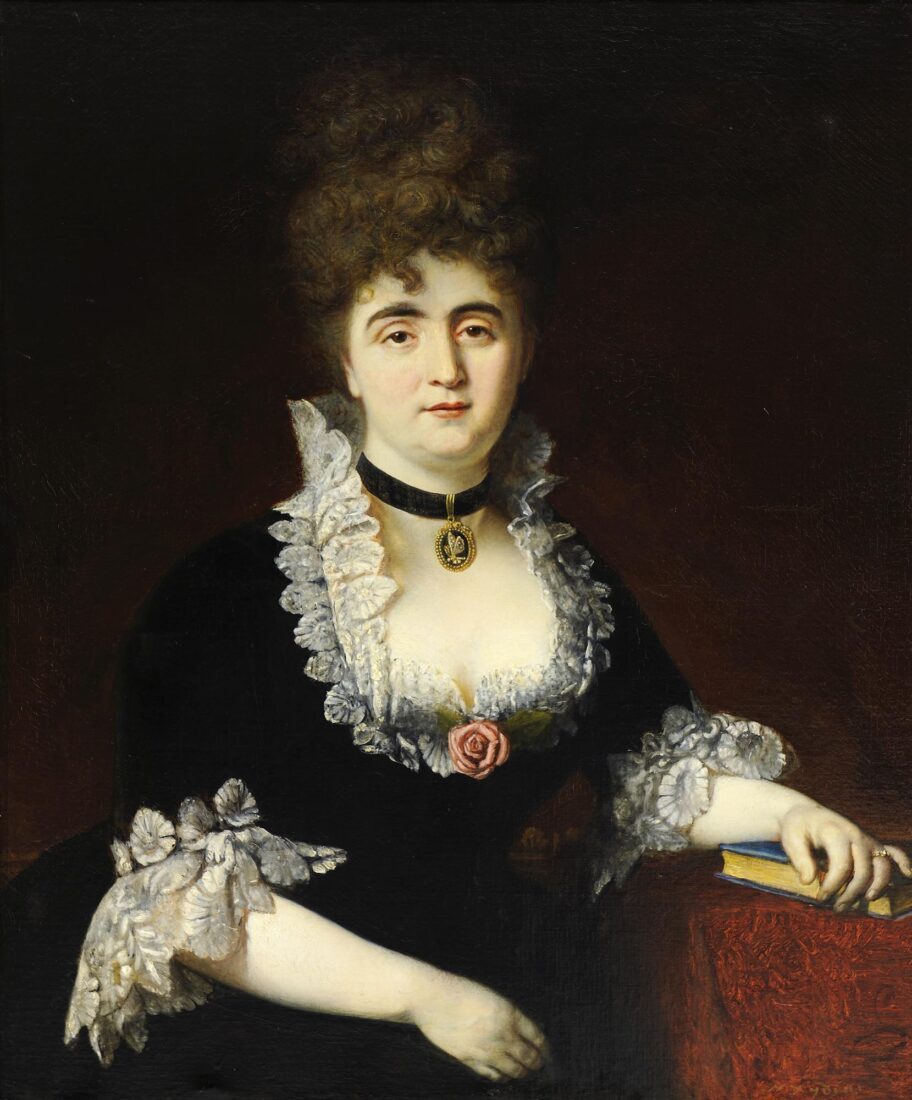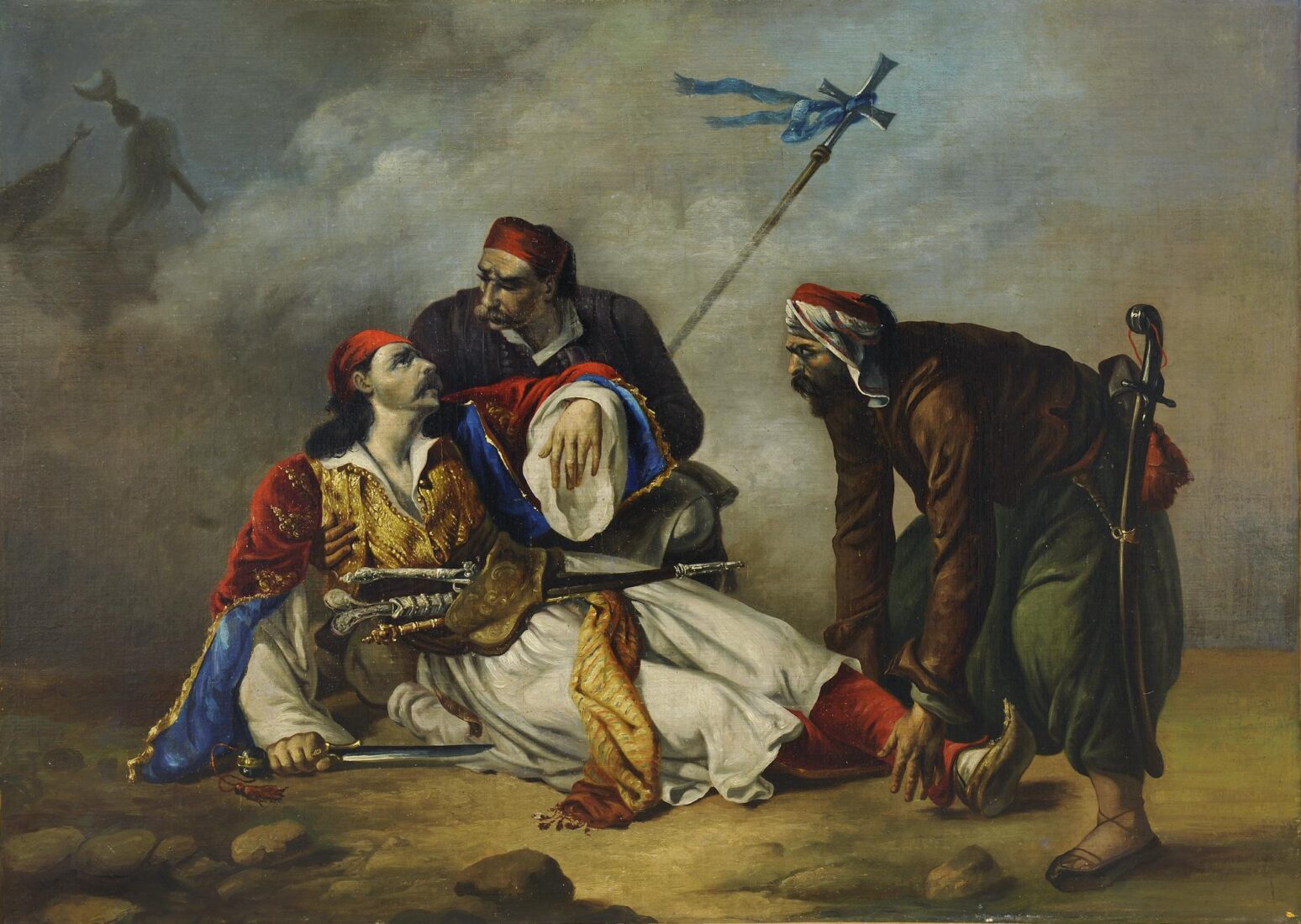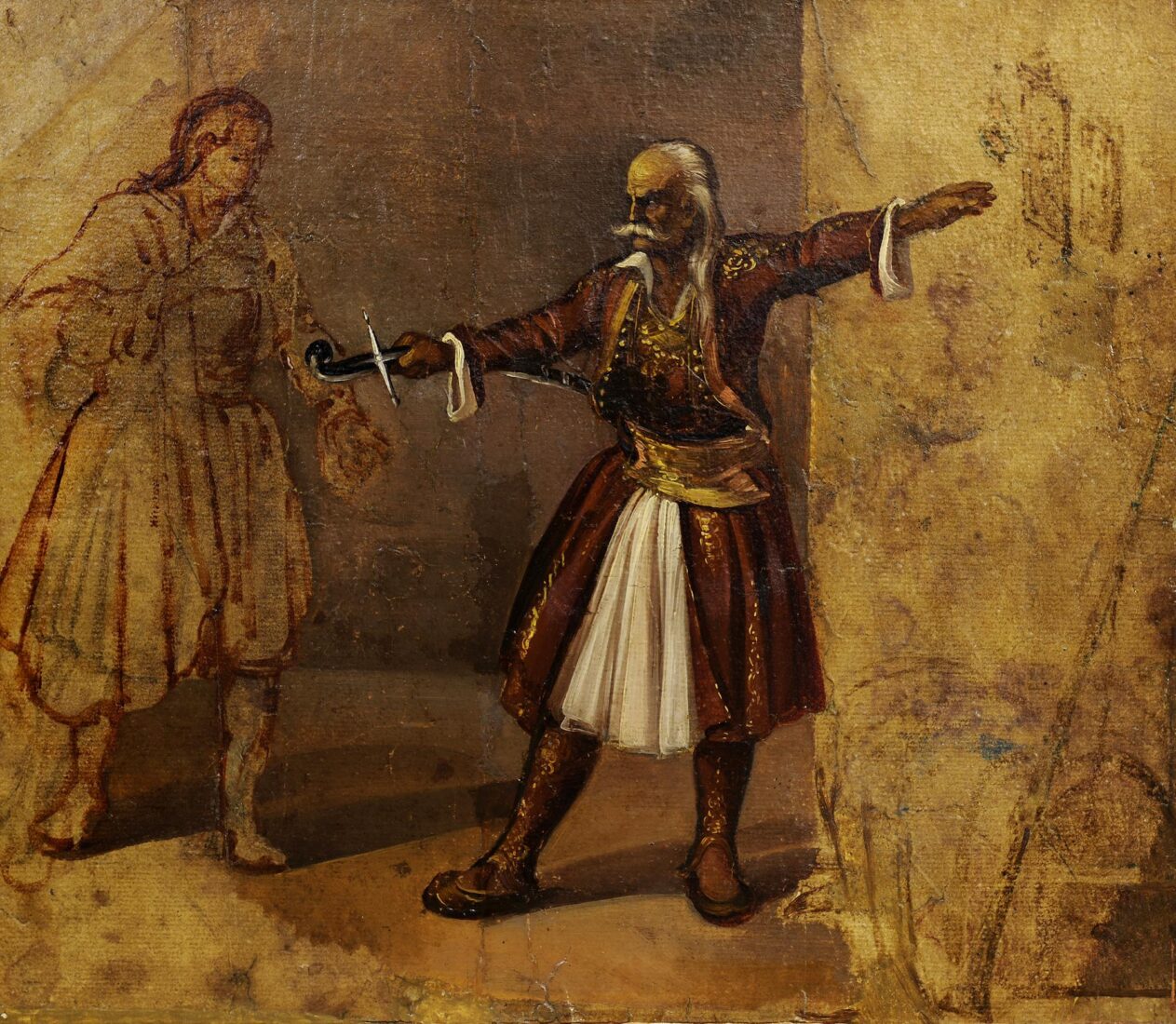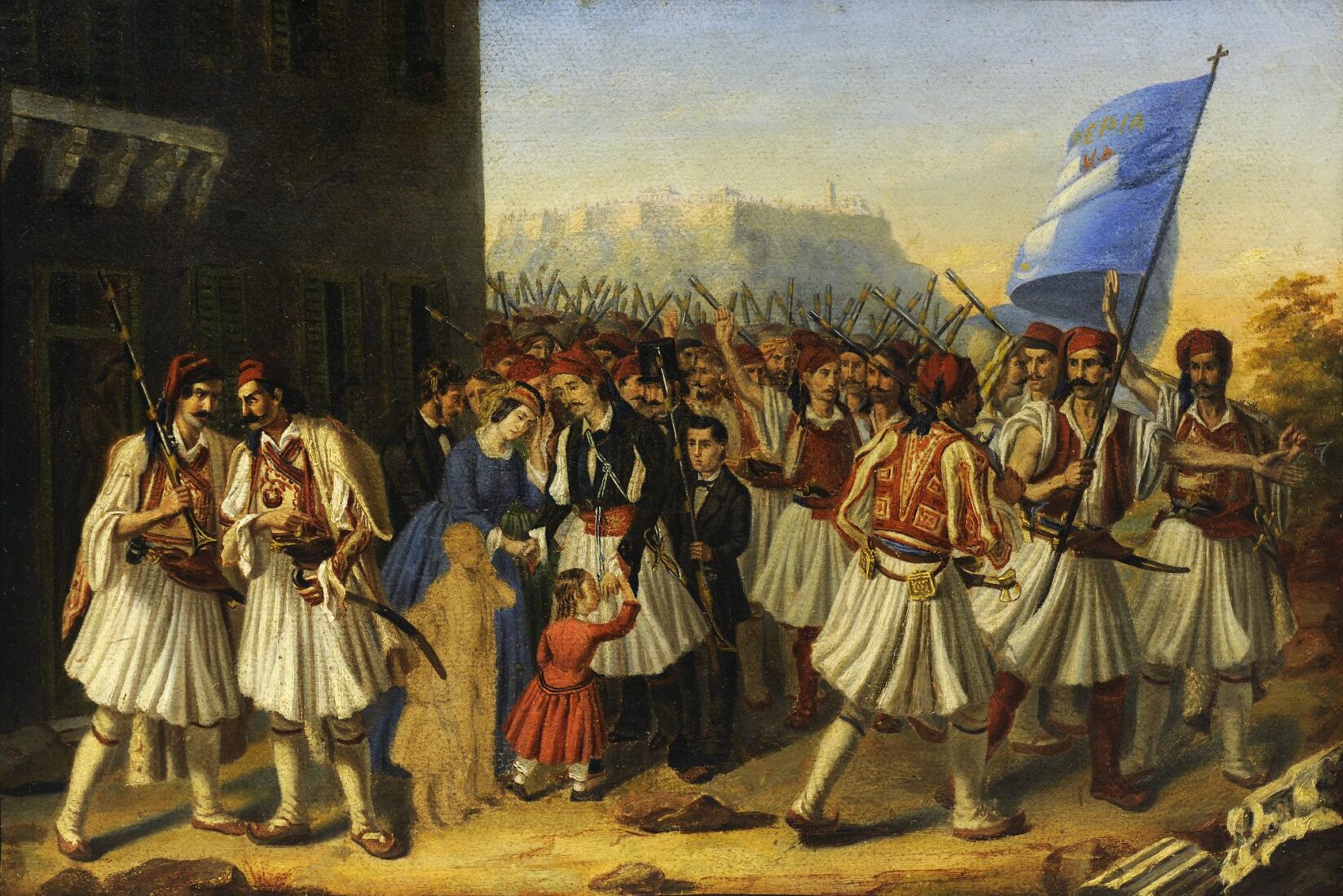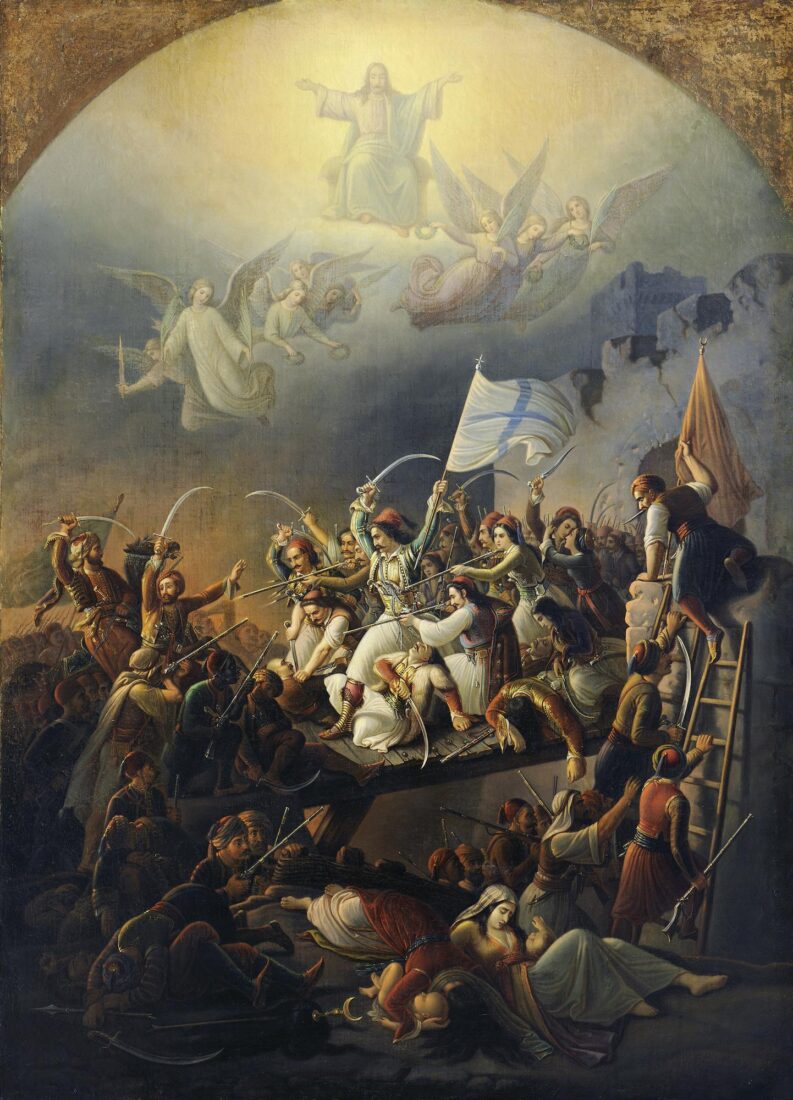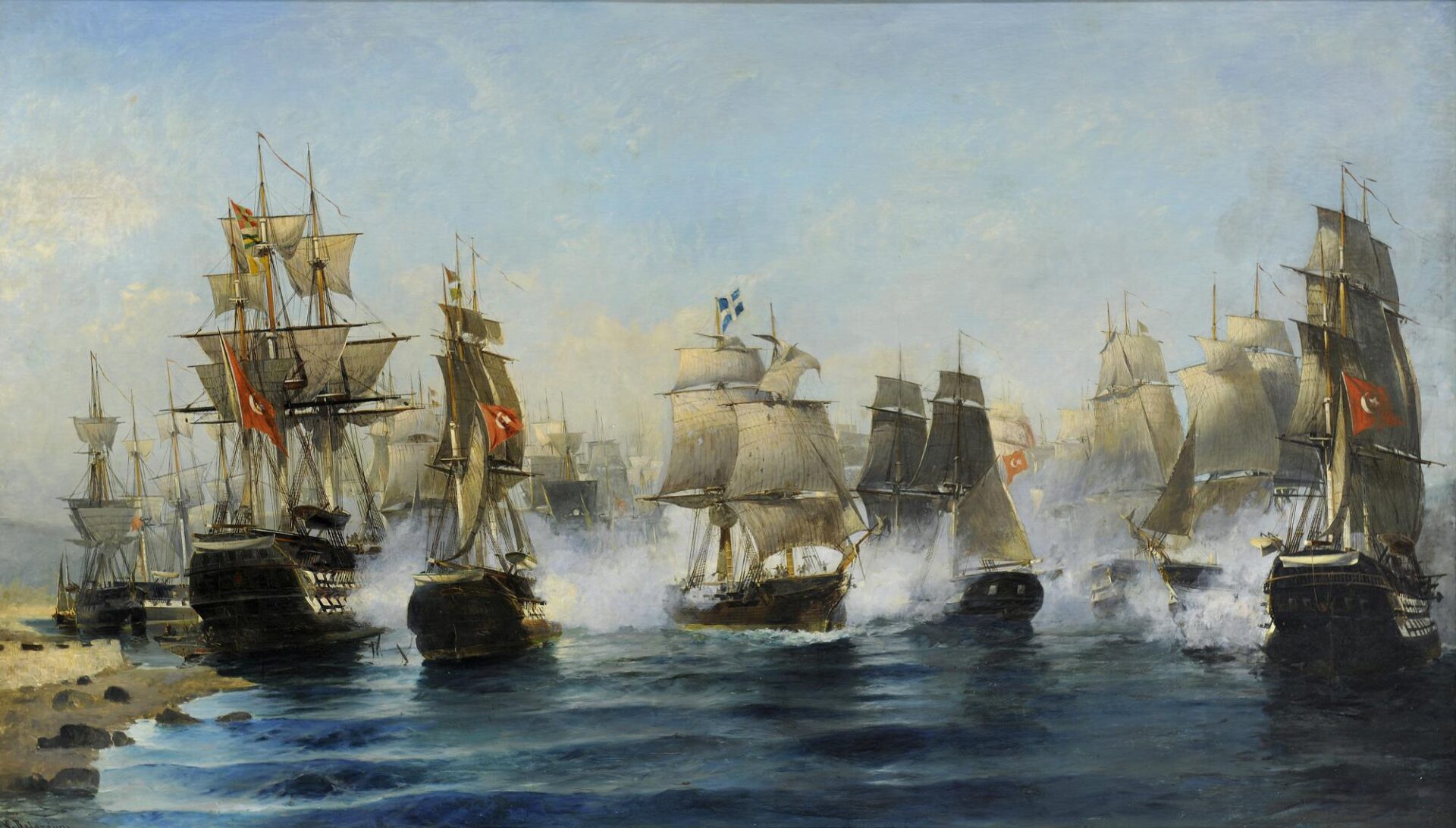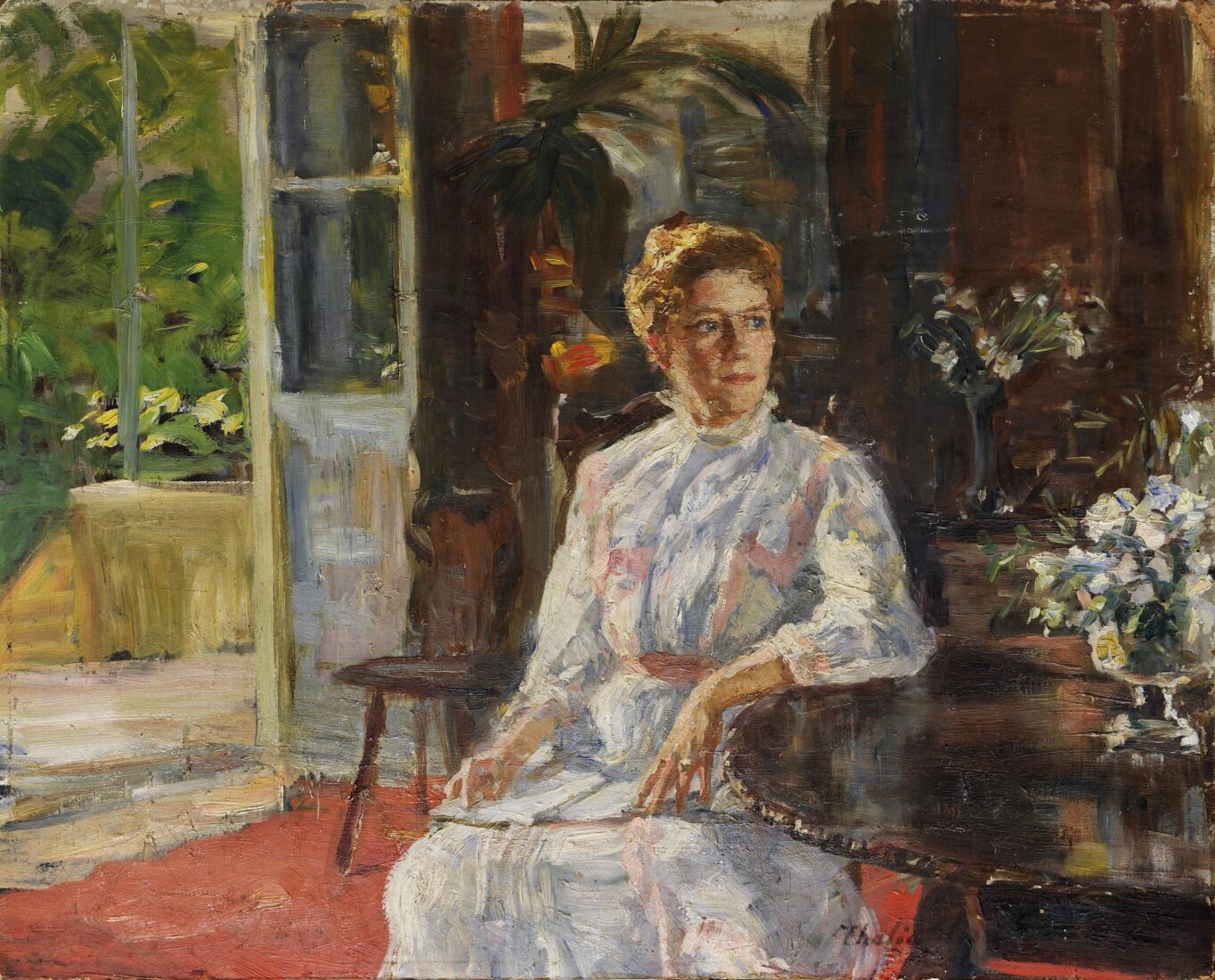Yannis Gaitis was a restless and inventive man with a strong need to question things coupled with an innate sense of humor. These qualities characterize his art and are embodied in his signature little men.
The little man, a kind of “everyman,” appeared in Gaitis’ painting in the early sixties. He was gradually standardized, schematized and became the protagonist of his compositions, rhythmically repeated in a multitude of combinations. The little man later moved beyond the strict confines of the two-dimensional painted image. He went on to occupy three-dimensional space, decorating furniture and all sorts of everyday utilitarian objects, entered the realm of fashion, and starred in environments and happenings as a finally living human being.
“Mass Transport” is an expression of Gaitis’ critical as well as ironic view of the homogenization, encapsulation and isolation of humankind in urban centers. The double title – “Mass Transport” or “General Transport” – provokes a number of different associations.
Lambros Gatis studied at the Vakalo School and worked closely for ten years with the engraver Vasso Katraki, but sculpture has always been his principal expressive means. His interest in form and the possibility of the transformation and extension of it through space by means of motion manifested itself at the beginning of the Eighties when he began to create metal constructions assembled from various useless objects and machine parts. These constructions, hanging suspended or on the ground, made with imagination and inventiveness, resemble robots, imaginary beings or peculiar weapons and impose themselves on space by means of mechanical motion and lighting.
“SBBR G” is a hanging electrically-driven construction whose parts turn in various directions, transmit small bursts of light and at the same time emit a strange sound, which might be the sound made by some unknown weapon.
The artist who painted this work, Theodoros Vryzakis, was left an orphan in the War of Independence, when his father was hanged by the Turks. He studied in Munich and became the main exponent of historical painting.
This major painting evokes one of the most tragic and renowned episodes in the Greek struggle for independence – the heroic exodus of the inhabitants of the town of Missolonghi during the night of April 10, 1826. The composition is arranged along a perpendicular axis, without depth, split into two sections: the heavenly and the earthly one. In the heavenly section, on the axis, that is, in the centre of the composition, is seen the enthroned God in a golden cloud, blessing the fighters, while angels with laurel leaves and wreaths are preparing to coronate the heroes. The Greeks believed that their rightful cause enjoyed Christ’s blessing. In the earthly section, on a wood bridge, Greek fighters are seen brandishing their swords, storming out of the wall gate. One of them is waving in his left hand the Greek flag with the cross on the pole. Some have already been wounded. Women and children follow. Mothers and children have fallen in the ditch underneath the bridge. Some are already dead, others lie dying. The fully armed Turks are waiting for the heroic fighters. Some of them are climbing up the walls on a ladder. Uproar, tension, drama prevail. It is as if we could almost hear the noise of weapons and the cries of the wounded. The painter has depicted the scene in great accuracy and meticulousness. This painting is romantic in spirit but academic, calligraphic, careful in implementation. A brown and gold tonal palette of black, white and red prevails.
